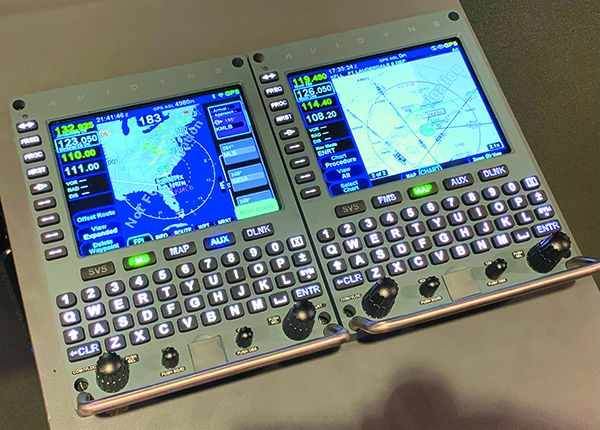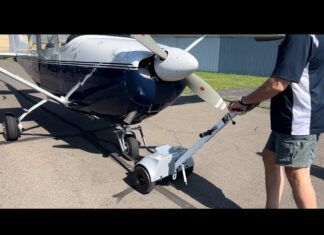These days, STC approvals for jets are neither inexpensive nor easy to come by, but after a relatively short certification effort, Avidyne has new approvals under its belt for the Atlas navigation system.
The Atlas system is unique because it provides a sizable—and relatively inexpensive—one-shot upgrade for old jets and turboprops that haven’t seen avionics upgrades since the Reagan era. It’s tough to believe, but in some cases, these old jets don’t even have WAAS GPS capability. That limits their operation, and also their resale potential because the avionics in many older jets aren’t supported and if they are, it might not make sense given their age and capability.
The Atlas trickles down from Avidyne’s successful IFD-series retrofit GPS navigators and is packaged in a Dzus-mount chassis that fits the center pedestal area of jets that might already be equipped with ancient nav management systems that are long extinct. At 7.5 inches tall, 5.75 inches wide and 10.61 inches deep, the system is designed to fit the space occupied by older FMS models. And compared to other avionics retrofit solutions, the Atlas can reduce installation effort because there could be less teardown and panel work. It also saves panel space and significantly reduces weight.
AUTOPILOT, SBAS, SBAS/LPV-CAPABLE
At the heart of Atlas is a GPS/SBAS flight management system that meets TSO-C146c for full SBAS/LPV approach guidance, plus it is an approved GPS position source for ADS-B. This GPS position source is one reason why ADS-B equipage for the turbine market was slow to evolve, and while the market has slowly caught up, there are plenty of Jurassic jets that remain parked because they simply haven’t been upgraded yet. This is another solution.
Compared to some of the ancient avionics in the flight decks of some older jets, the Avidyne Atlas is worlds ahead. Like the IFD-series retrofit navigators, the Atlas has a modern feature set, with a hybrid control set. Nearly anything you can accomplish with touchscreen you can also do with the unit’s hard controls.
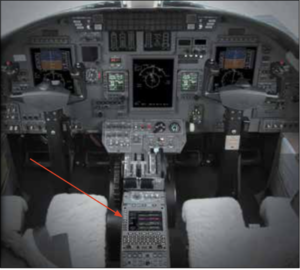
Pilots used to the IFD navigator will recognize the unit’s flight planning, one-touch departure, airway and arrival navigation menu structure, plus Avidyne’s patented GeoFill waypoint nomination. And since the unit will generally be installed in the pedestal, that means less heads-down time. There’s also a full QWERTY-style keyboard, and the touchscreen hybrid user interface has map panning and rubber-band flight plan editing.
But for a lot of operators, perhaps the deal-sealer with the Atlas is its ability to interface with a variety of third-party older avionics, with an I/O designed to integrate with existing EFIS, PFDs, CDIs, HSIs, remote sensors and autopilots. Older jets might still have mechanical and analog flight instruments that may not work with some newer retrofit systems. For ADS-B support, the Atlas was designed to feed WAAS GPS position to a variety of Mode S transponders.
But the Atlas’ real capability is approaches, especially autopilot-coupled procedures. Avidyne’s GPS legacy avionics support (called “GLAS”) provides a direct interface to the dated Collins Pro Line 21 and Honeywell Primus EFIS systems for vertical guidance on approaches. Since many EFIS platforms were certified long before the availability of LPV approaches, there’s a need for coupled approach guidance on these and other SBAS approaches.
For a more complete upgrade, the Atlas is available with optional integrated 16-watt VHF comm and nav radio with glideslope. Years ago, Avidyne—with the FlightMax—was one of the first to develop a multifunction display with ship’s radar overlay, and the Atlas is available in a version that works with BendixKing digital weather radar. There’s also an optional TAWS-B terrain version, plus RS-170 video display capability.
WHAT’S THE TARGET MARKET?
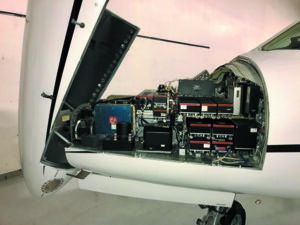
It’s a pretty broad focus—essentially the fleet of legacy jets (including older turboprops) with federated avionics architecture, and even some jets with integrated avionics. Dan Reida, Avidyne’s director of business aviation sales, told us there are likely over 10,000 candidate airframes for the Atlas—a huge market.
The initial STC that corresponds with the Atlas TSO is for the Cessna Citation 560-series Excel and XLS models. But, with that certification in place, Avidyne has been working with select MRO partners to expand the STC to other models, including Citations, Falcons, Hawkers, Challengers, King Airs, earlier Learjets and even some airliner applications.
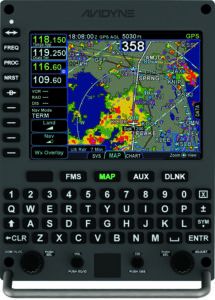
Downtime is critical for most jet operators, and as a rough estimate, Avidyne said a single Atlas installation might be installed in around 200 hours. The starting list price for a single Atlas system is $44,999, but we suspect larger aircraft will end up with dual Atlas systems, or even an Atlas in the center pedestal linked to an IFD550 navigator up on the panel. The benefit of this configuration is that the jet can also have synthetic vision (syn vis on the Atlas might not be practical mounted down in the pedestal). Like the IFD, the Atlas has wireless connectivity for iPad app interfacing, including ForeFlight.
Don’t expect every Avidyne dealer to install the Atlas product. Not all avionics shops are equipped to work on Part 25 jets, and Avidyne is building a specialized dealer network with the in-house engineering capabilities to install and support the Atlas. Visit www.avidyne.com for more.

